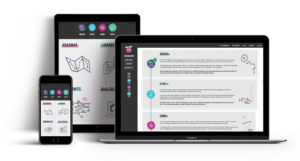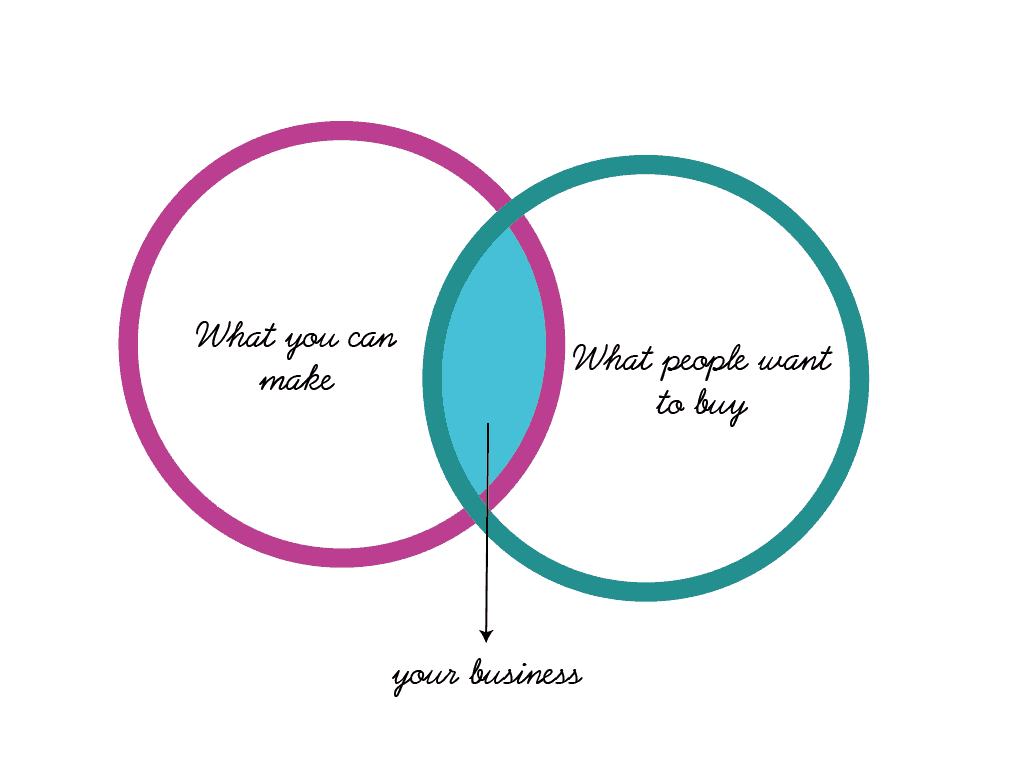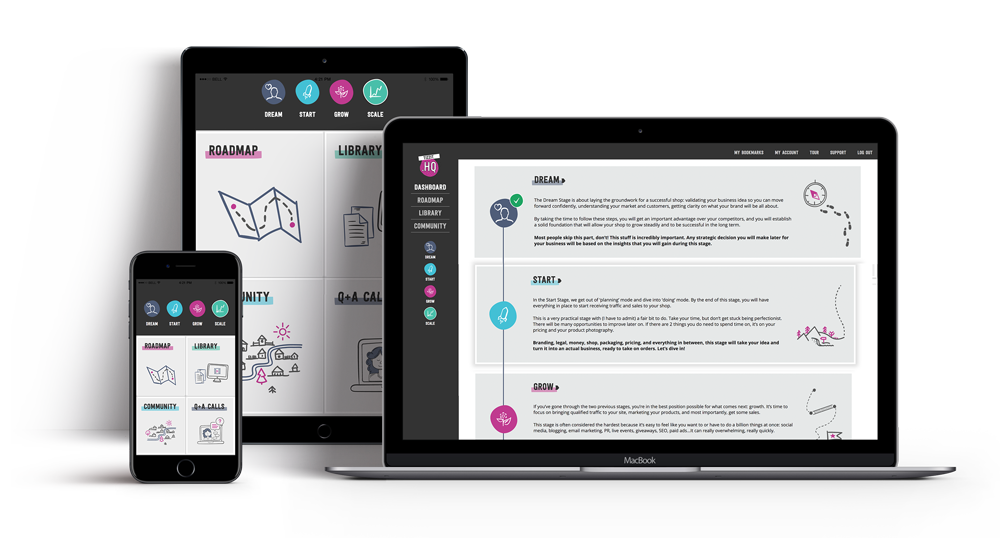from dream to handmade biz
Lesson 3 – make something that sells
lesson outline
- Making something people want
- Your products
- Your ideal customer
lesson checklist
- I have defined my area of expertise, and know what category my products fall into;
- I have listed the products that I will be selling in my ‘Product Brainstorm’ worksheet and made sure they were all ‘reproducible’;
- I have completed the Ideal Customer Profile workbook and identified who the ideal buyer for my products is;
- Moving forward, I am confident that my business is at the sweet spot between what I can make (my products) and what people (my ideal customers) will want to buy.
need more help?
check out tizzit hq

WHEN YOU BECOME A MEMBER, YOU GET ACCESS TO:
- The 4-stage Maker’s Roadmap system: an interactive, step-by-step guide to all the fundamental steps you need to take (and in what order!) to build a successful handmade shop
- 20+ in-depth courses and guest expert workshops (and more added monthly!)
Live Monthly Q&A Sessions - A friendly and supporting community of like-minded makers for you to connect with and get feedback from
- And so much more: accountability, quick wins videos and tutorials, workbooks and checklists, etc.
Making something people want
This seems so damn obvious, I know. Another ‘DUH’ moment right? But honestly, that’s where a lot of businesses fail. There’s a difference between thinking that people will like what you create, and actually creating something that people will want to buy.

As my friend Jess Van Den puts it: “When you start making for profit rather than for pleasure, your perspective needs to shift.”
When you stop creating for your own fun and want to make a living out of what you make, you have to make sure that you are at the intersection between ‘something you can produce’ and ‘something people will buy’.
To make sure you hit the intersection, there is a two things you need to be clear about and that need to be a perfect match:
- What you can make: your products;
- Who are the people that will want to buy these: your ideal customers.
Let’s take a look at each of these.
Your products
The first thing that you have to do is to decide what type of products you are going to sell. This is easy if you already know what your area of expertise is (eg.: pottery). But if you have been playing with DIY and crafts for a while and are skilled at a few different things (eg.: embroidery and knitting), then you are going to have to chose what you will specialize in.
Later on, you might be able to expand your business and to add a entirely new range of products, but when you’re just starting out it’s important to stay focus on one thing. But don’t try to do too many things at once at the beginning or you risk spreading yourself thin and confusing your customers (“what is this shop about?”).
So, what are you going to build your business around? Are you a potter? A knitter? An artist? A leatherworker? A weaver?
Whatever your hobby/talent is, try to be specific: if you are a potter, what type of objects will you make? Figurines or vases?
Once you have decided exactly what type of products you will sell, it’s time to get even more specific and to start thinking about your first collection.
What are the products that you will be selling on your shop the day it opens?
I know this isn’t an easy done-in-30-minutes type of exercise, so I am not expecting you to come up with your definitive list of products today! Product creation is the most important part of your business after all and you should take all the time you need for it – which I am sure is more than 24h
For today’s lesson though, I would like you to brainstorm. Start writing down ideas of what a few of your products could be, and for each, write a super short and simple description, or define the product characteristics.
A note on picking the right products to sell:
When you craft as a hobby, making unique items is perfectly fine. But when you want to start selling your crafts, you have to make items that are reproducible. This is because:
- you want to design consistent product lines so your customers have a clear idea of what your brand is all about
- you need to be able to know in advance how much making one more unit will cost you (time + $).
Limited editions and one of a kind products are great, but they shouldn’t be the foundation of your business.
I have created a Product Brainstorm Worksheet that you can download at the bottom of this page. Go get it and fill it up the best you can, you will need it for the next exercise!
Your ideal customer
I couldn’t think of a better way to explain why defining your ideal customer matters so much than by being blatantly honest: Nobody – except your ideal customer – cares about what you make. You’re not entitled to any sales simply because you made something. What people care about is themselves: what they like, what they need, what they want.
You need to know who will care, and who will pay for your products. You need to know who you are making your product for so you can align your products and marketing efforts to put your creations in front of them.
Taking some time now to define your ideal customer will save you tons of time and money down the track on marketing: you will know exactly who you are talking to, where they hang out, what they like and don’t like, etc. You will also be able to create a brand that resonate with them, which will help turning your customers into repeat customers and raving fans that will promote your shop for you.
You know what unique products you plan on selling, now let’s find out who your ideal customer is.
I created a workbook that you can download just below. It’s full of instructions and simple exercises that will make the process a fun and easy one.
Make sure you have your “Product Brainstorm list” close by, it will come in handy!
———
WOW! You’ve accomplished so much in today’s lesson! Much more than what most makers and handmade business owners would ever do when starting out. This puts you in a great position and means that you are building a solid foundation for your shop, which will save you tons of time and money in mistakes you won’t be making down the line! Congrats!
Don’t forget to check your emails tomorrow for Lesson 4 of ‘From Dream to Handmade Biz’!

